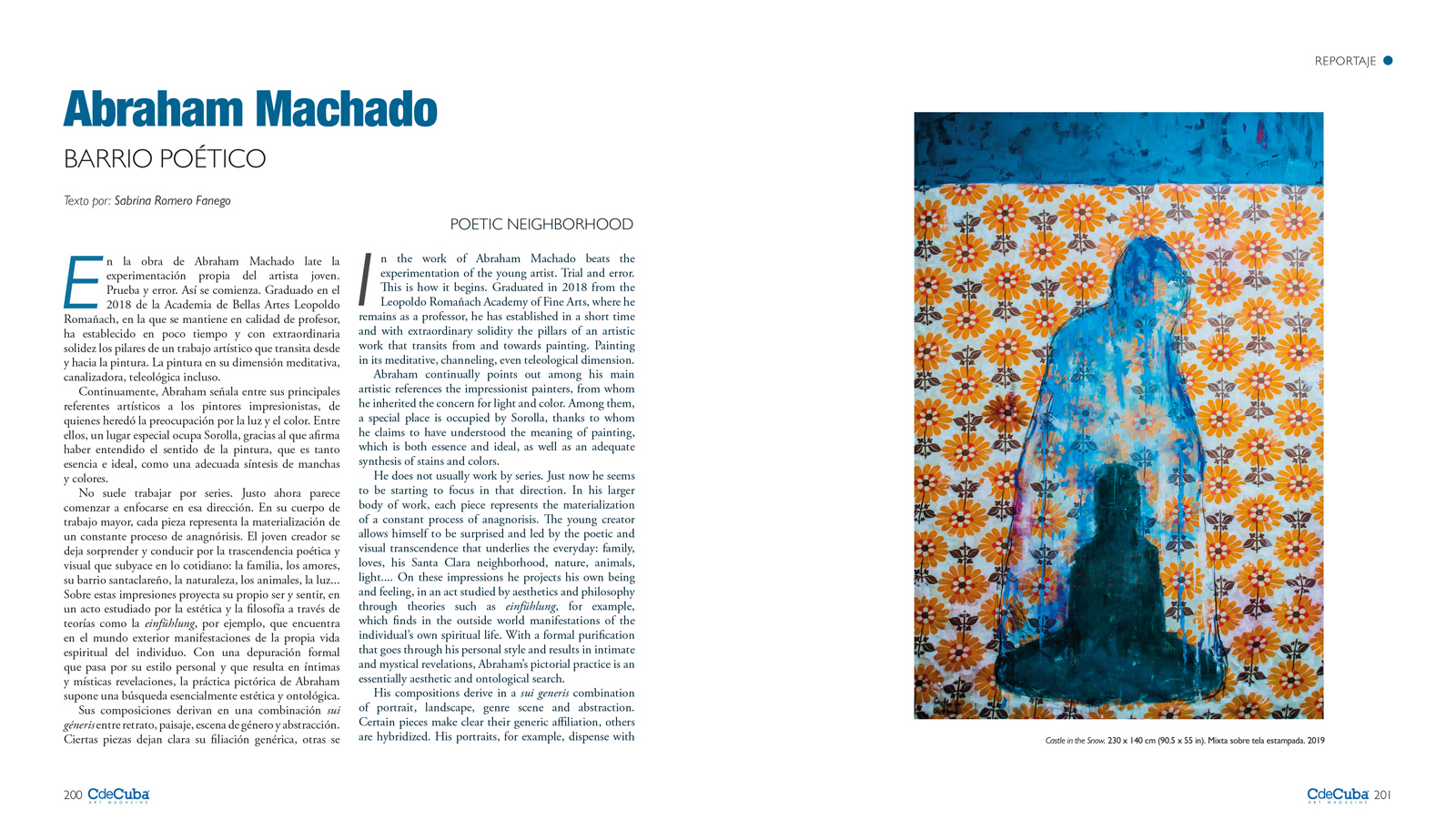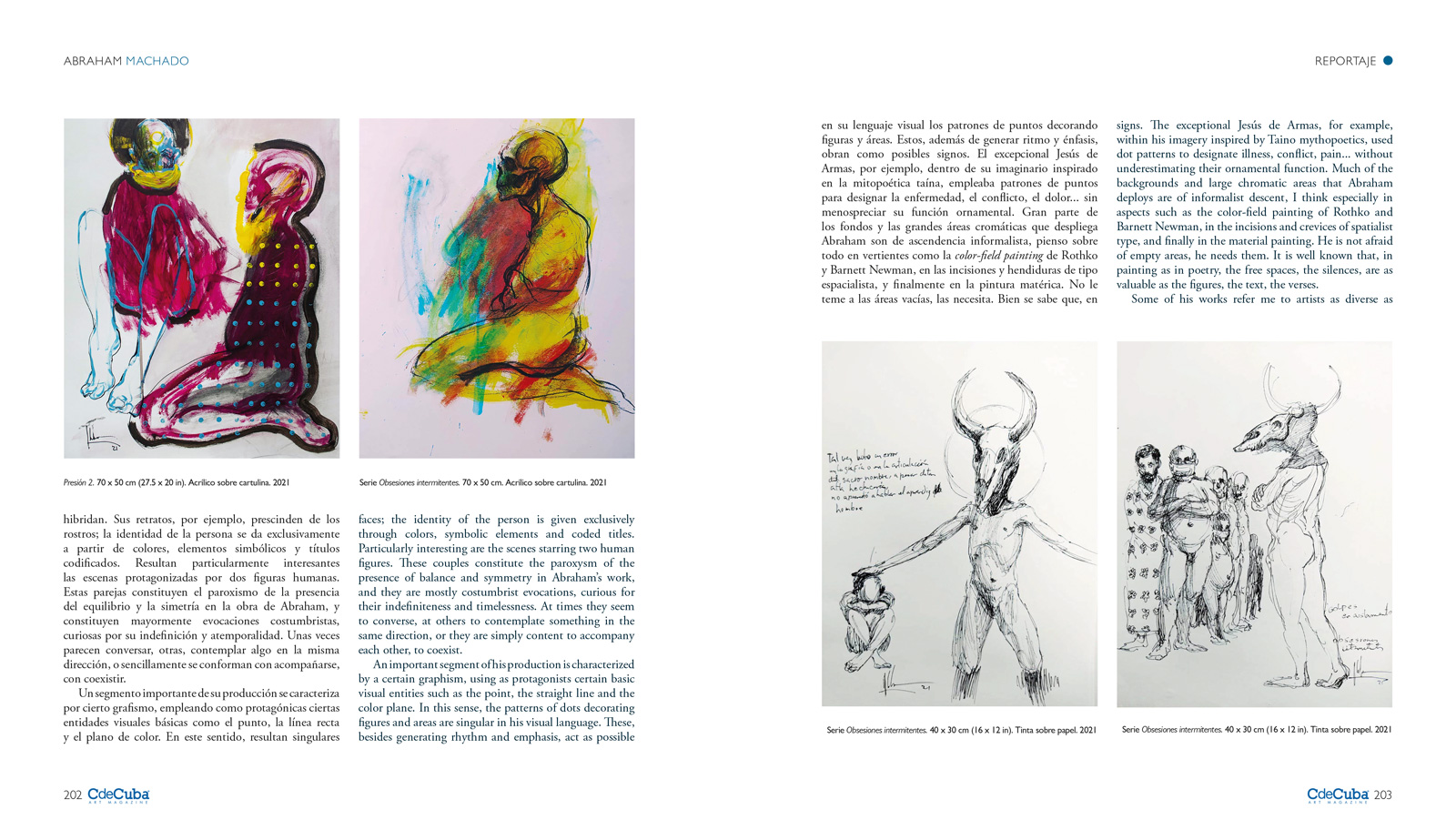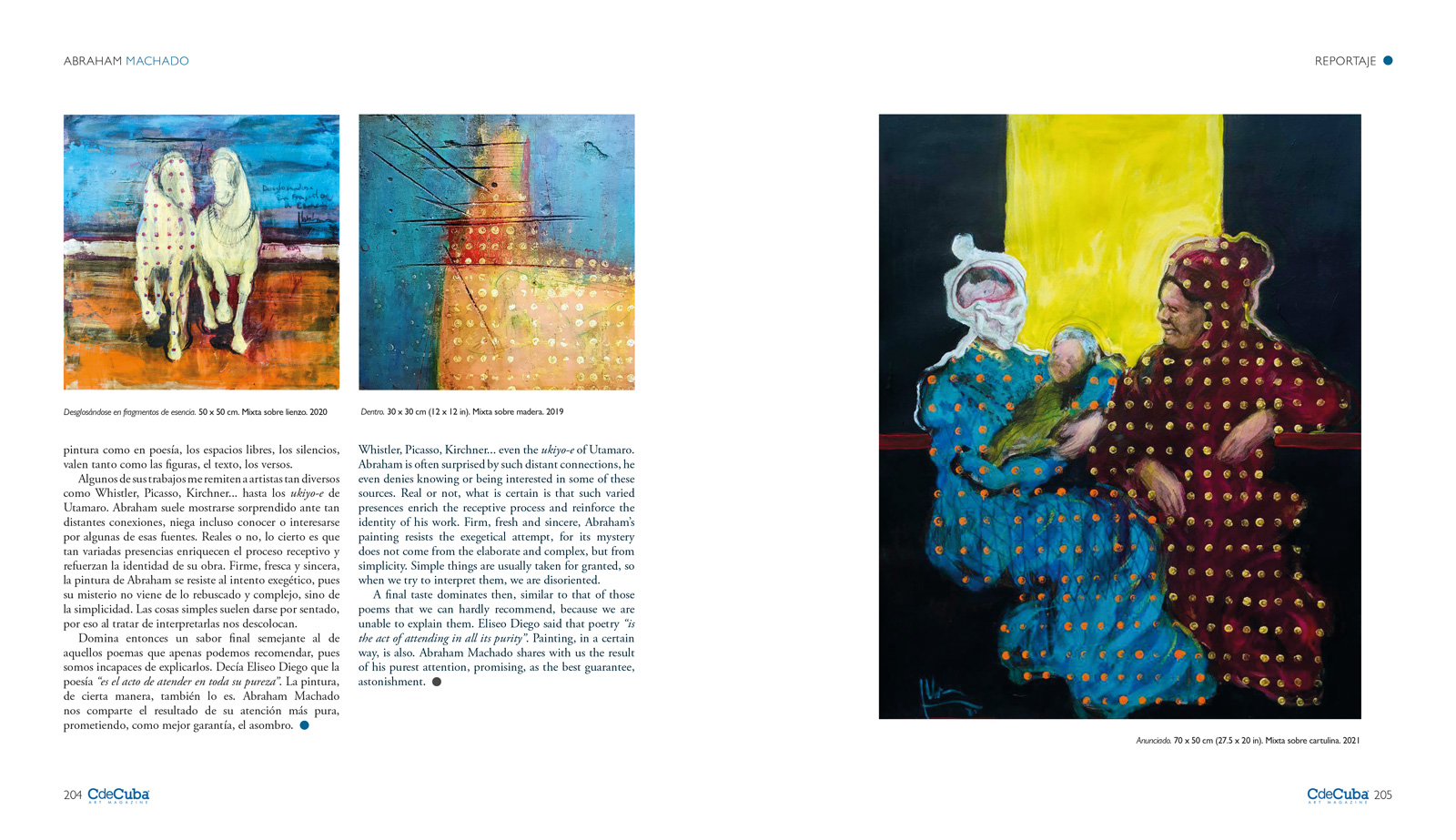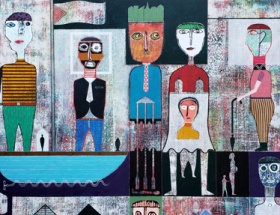Poetic Neighborhood
By Sabrina Romero Fanego
In the work of Abraham Machado beats the experimentation of the young artist. Trial and error. This is how it begins. Graduated in 2018 from the Leopoldo Romañach Academy of Fine Arts, where he remains as a professor, he has established in a short time and with extraordinary solidity the pillars of an artistic work that transits from and towards painting. Painting in its meditative, channeling, even teleological dimension.
Abraham continually points out among his main artistic references the impressionist painters, from whom he inherited the concern for light and color. Among them, a special place is occupied by Sorolla, thanks to whom he claims to have understood the meaning of painting, which is both essence and ideal, as well as an adequate synthesis of stains and colors.
He does not usually work by series. Just now he seems to be starting to focus in that direction. In his larger body of work, each piece represents the materialization of a constant process of anagnorisis. The young creator allows himself to be surprised and led by the poetic and visual transcendence that underlies the everyday: family, loves, his Santa Clara neighborhood, nature, animals, light…. On these impressions he projects his own being and feeling, in an act studied by aesthetics and philosophy through theories such as einfühlung, for example, which finds in the outside world manifestations of the individual’s own spiritual life. With a formal purification that goes through his personal style and results in intimate and mystical revelations, Abraham’s pictorial practice is an essentially aesthetic and ontological search.
His compositions derive in a sui generis combination of portrait, landscape, genre scene and abstraction. Certain pieces make clear their generic affiliation, others are hybridized. His portraits, for example, dispense with faces; the identity of the person is given exclusively through colors, symbolic elements and coded titles. Particularly interesting are the scenes starring two human figures. These couples constitute the paroxysm of the presence of balance and symmetry in Abraham’s work, and they are mostly costumbrist evocations, curious for their indefiniteness and timelessness. At times they seem to converse, at others to contemplate something in the same direction, or they are simply content to accompany each other, to coexist.
An important segment of his production is characterized by a certain graphism, using as protagonists certain basic visual entities such as the point, the straight line and the color plane. In this sense, the patterns of dots decorating figures and areas are singular in his visual language. These, besides generating rhythm and emphasis, act as possible Whistler, Picasso, Kirchner… even the ukiyo-e of Utamaro. Abraham is often surprised by such distant connections, he even denies knowing or being interested in some of these sources. Real or not, what is certain is that such varied presences enrich the receptive process and reinforce the identity of his work. Firm, fresh and sincere, Abraham’s painting resists the exegetical attempt, for its mystery does not come from the elaborate and complex, but from simplicity. Simple things are usually taken for granted, so when we try to interpret them, we are disoriented.
A final taste dominates then, similar to that of those poems that we can hardly recommend, because we are unable to explain them. Eliseo Diego said that poetry “is the act of attending in all its purity”. Painting, in a certain way, is also. Abraham Machado shares with us the result of his purest attention, promising, as the best guarantee, astonishment.






